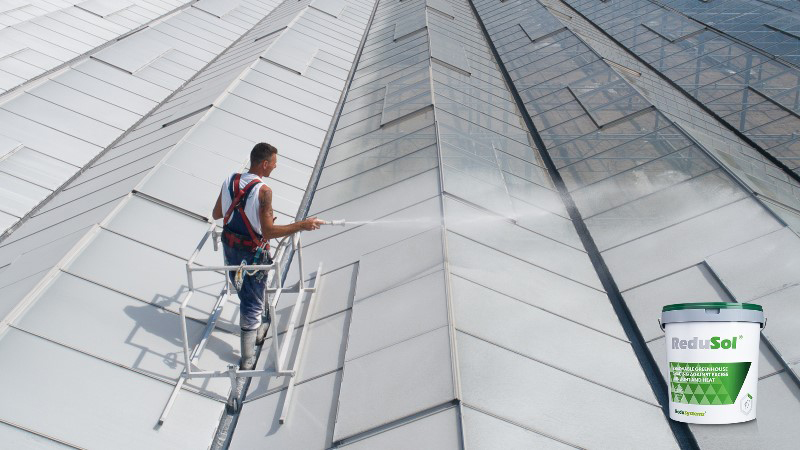Intersection of Cannabis, AI, and Ag Tech Straight Ahead

Pictured above is a general purpose dual RBG camera system, designed by Carnegie Mellon University researcher George Kantor and his R&D team, to collect high quality images in agricultural environments. Collected images can feed crop-specific artificial intelligence methods that extract measurements such as crop yield, maturity, or disease incidence.
Generally speaking, artificial intelligence (AI) enabled technologies are infiltrating every aspect of our daily lives, from the smartphones everyone is carrying around everywhere to places where maybe AI is best left on the sidelines (have you heard about Alexa’s newest integration into a connected shower head device?).
As you all know, the greenhouse has not been spared from the “AI Revolution” – not in the slightest – and one area we’re hearing the technology is making believers out of skeptics is in the legal cannabis space, where high profit margins and a youthful, tech-focused grower demographic creates the perfect storm for early-stage ag tech adoption. If you disagree with that statement, I invite you to spend a day next year at the massive MJBizCon show in Las Vegas, which at this point is basically a smaller, more focused CES show for cannabis producers, and then let me know if you still don’t think cannabis growers are all that innovative or on the cutting edge of technology adoption.
The point is, this stuff is everywhere already, and its only becoming more ubiquitous no matter what crop you’re producing, but especially so among high value crops like cannabis, hemp, and specialty fruits and vegetables.
On a recent trip to Carnegie Mellon University (CMU) in downtown Pittsburgh, PA, to learn about some research breakthroughs taking place there in the engineering department around robotics and camera sensing platforms for ag, I had the chance to sit down with Bloomfield Robotics founder and CEO Mark DeSantis, who heads up a relatively new AI-focused startup that recently spun out of the CMU Tepper School of Business’ on campus tech incubator, the Swartz Center for Entrepreneurship. The startup’s tagline is “Providing high resolution crop data to breed better plants.”
Having heard DeSantis’ elevator pitch centered around cannabis producers and their willingness to invest and be a sort of guinea pig for ag tech solutions due to the sheer amount of money they are able to make on a successful crop, I wanted to pick DeSantis’ brain on what he’s seeing in ag tech adoption in general from his perspective as a self described “serial entrepreneur.”
Currently his outfit, Bloomfield Robotics, is still in the capital raising stage of the startup cycle. They are working on and have commercialized on a small scale both a handheld sensing device that helps cannabis growers know precisely when to harvest a crop based on reading the trichomes, as well as a tractor-based, high resolution plant sensing platform that leverages plant and yield mapping algorithms to help a grower manage and make management decisions about blocks of plants.
GreenhouseGrower.com (GG): From your perspective as a self-described serial entrepreneur just now getting into digital farming, I’d be interested to hear some of your thoughts on why tech adoption in ag has kind of trailed behind other legacy industries like health care and banking?

Mark DeSantis
Mark DeSantis (MD): “Great question. I’ve had the good fortune of starting and growing AI-based tech companies in markets as diverse as defense, power and infrastructure before getting into the ag-tech market and I already see a number of parallels and some differences when it comes to adopting new technology. All of these markets share long histories of successfully deploying reliable, tried and true solutions. Another common theme is the cost of failure is very, very high. A fighter malfunctions and people die. The power goes out and our lives are disrupted. If crops fail the food prices go up and, in some places in the world, people go hungry. And as a result, basic industries like ag want to make absolutely sure any new solution really works, which I think explains a lot of the caution to adopting new tech. Where ag is different, I suspect, from these other industries, is the dis-aggregated nature of ag. There are still a good number of smaller farmers in the world whose operations are not large enough to afford – either the cost, risk or both – to try new technologies.”
GG: One trend currently in the hort tech market is the demand for any new tech to seamlessly fit into and enhance, or make more efficient, the grower’s current workflow. How do you feel AI-based sensing data like what Bloomfield is doing fits into and streamlines that medium-to-large-sized indoor cannabis producer’s workflow?
MD: “Our focus at Bloomfield Robotics is to provide complete transparency to the growing cannabis using cameras – close up and at a distance – married with AI based deep learning to look for all of same things a trained plant inspector would look for, but do it for every single plant in the grow, automatically and continuously. The result is that our growers now have a consistent, continuous and, most important, data-driven view of every plant. That information allows for fewer errors in growing and production, catching problems early before they become far more serious and provide far more accurate and early yield prediction.”
GG: I believe you told us you had around 4 client cannabis grows now under your belt in 2019…what have you learned over the last 12 months about farmers and how they use data that maybe surprised you?
MD: “We’ve learned a lot and good number of our early assumptions were either wrong or off the mark. However, two big learnings stand out. First, the level and application of advanced science-based tools and techniques is very, very high. Our customers come with exceptional backgrounds in agronomy, botany and even astrophysics and are applying the latest knowledge available to improving things like yield and crop performance. Second, the technology, processes and operating rhythms that are well established in other industries are still emerging in many cannabis operations but doing so an accelerating rate. This is to be expected in any new industry and it is exciting to see what comes next!”
GG: Did your team uncover any really big, over-arching takeaways from the year?
MD: “Innovations that are now being implemented or emerging in cannabis are going to ultimately transform all of agriculture in ways that are hard to predict precisely but will likely be profound. The cannabis market currently has the gross margins and ready interest to try virtually any new tool, technique or technology that promises improved plant performance, more predictability and lower error rates. As result, this market is trying many new things that are likely not practical or too expensive to attempt by anyone else in the ag market. Nevertheless, what is and will work in the cannabis will makes it way to the rest of the ag world.”
GG: We’ve all heard the many various promises of what AI-can do for growers, but maybe are there things that AI can’t do?
MD: “This is my fourth AI-based company and my first one was sixteen years ago, backed with AI sort of worked. There were many, many things AI could not do back then that can easily do know. AI is ubiquitous. It is in your cellphone, car, TV and power drill so there is a lot AI can and will be able to do. However, one thing is will not do anytime soon and may never do is replace the experienced grower. There are things that experienced growers understand about what they’re and how they’re doing it that are just too nuanced, too complex and too subtle to be embedded in an algorithm or codebase.”
GG: Do you agree that there has been some ‘over promise and under deliver’ in these early stages of the Ag Tech market cycle?
MD: “My experience is that every new technology goes through a hype-cycle where the early expectations of the new thing are too high, too soon. This phenomenon has happened again and again and again. The internet is a case in point. The dot-com boom of the early 2000s was soon followed quickly by a long dot-com bust. It took nearly a decade before the world of Amazon, Netflix and Salesforce we know now would come about. I believe ag is now solidly in the post-hype phase of decade or so ago of robotic-ag is now entering a solid and sustainable up-cycle of a wide variety of practical, affordable and appropriate ag-tech solutions. Who will be the next Apple or Amazon of ag-tech is the big question that will be answered in the next five years or so.”
GG: Any thoughts on how we move the industry forward at a faster pace, when it comes to growers adopting tech?
MD: “It’s hard to imagine that the cannabis market could move at a faster pace and we see changes in the larger ag market picking up pace. However, I think the best means to keep the ball moving forward and maybe move fast is by de-mystifying advanced technologies like AI, deep learning and robotics. These technologies, as new as they are to ag, have been around for decades and are now practical tools that can make a difference for any grower now.”










